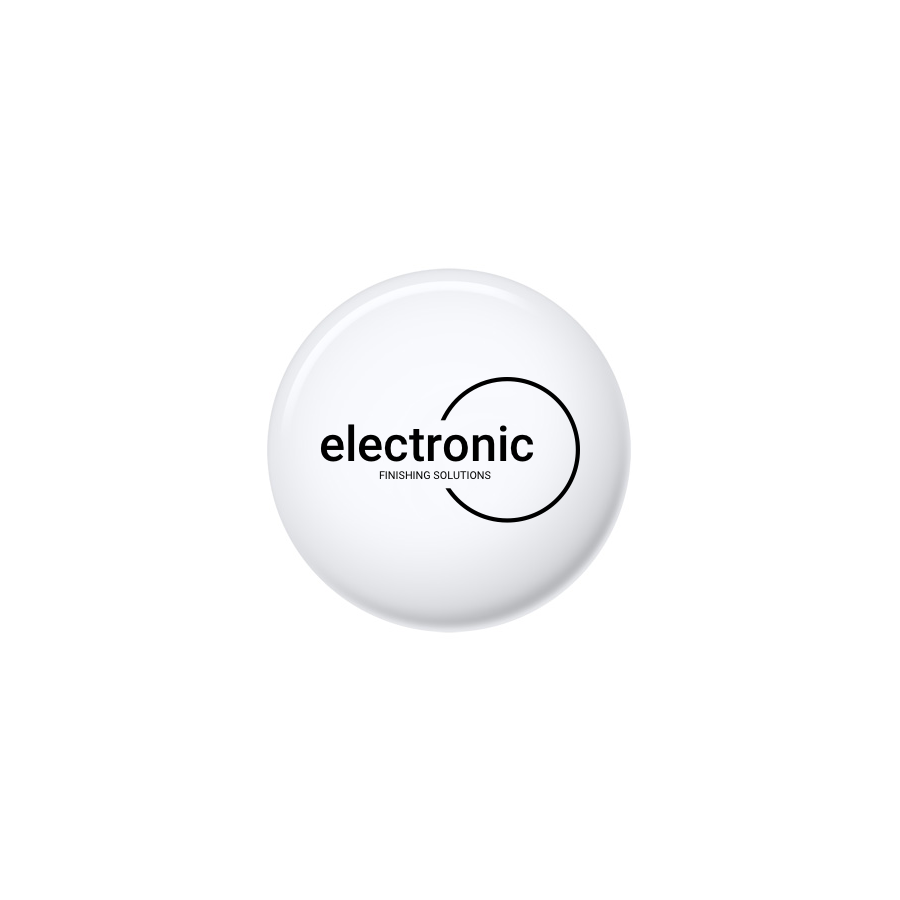Elevate Your Brand Above the Noise
In a crowded marketplace, knowing how to make your brand stand out is crucial for success. This listicle provides eight actionable strategies to elevate your brand and achieve significant growth. Learn how to create a distinctive brand identity, tell a compelling story, offer unique value, and leverage content marketing. We'll also explore creating remarkable customer experiences, embracing purpose-driven branding, building community, and utilizing innovative marketing approaches. These techniques will empower you to differentiate your brand, build strong connections, and leave a lasting impact.
1. Create a Distinctive Brand Identity
In the crowded marketplace of today, a distinctive brand identity is paramount to making your brand stand out. It's the foundation upon which all your marketing efforts are built and is crucial for attracting and retaining customers. This encompasses a cohesive visual system (logo, color palette, typography), a consistent brand voice, and clearly defined core values. A well-crafted brand identity enables immediate recognition and communicates your brand's unique value proposition at a glance, making it a cornerstone of how to make your brand stand out.

A strong brand identity provides a framework for all your marketing materials, from your website and social media presence to your packaging and advertising campaigns. It ensures consistency across all touchpoints, building trust and familiarity with your target audience. This consistency makes your marketing efforts more effective, as consumers are more likely to engage with a brand they recognize and understand. For companies looking to carve out a niche in the digital space, particularly those utilizing platforms like Shopify, a strong brand presence is vital. If you're in this category, a resource like how to brand your Shopify art store offers specific strategies tailored to that platform. Building a distinctive brand identity is crucial for standing out in a competitive market. This involves developing a unique visual style, voice, and messaging that resonates with your target audience. For those operating on Shopify, there are specific strategies to consider. (Source: How to Brand Your Shopify Art Store: 6 Tips for Standing Out In The Market from Picture It)
Features of a well-defined brand identity include:
- Cohesive Visual System: Consistent use of logos, colors, and typography across all platforms.
- Consistent Tone of Voice and Messaging: Maintaining a uniform brand voice in all communications.
- Memorable Logo and Design Elements: Creating visually striking and easily recognizable assets.
- Clear Brand Positioning Statement: Defining your brand's unique place in the market.
- Defined Brand Personality Traits: Giving your brand human-like characteristics to connect with your audience.
Pros:
- Creates Immediate Recognition: Differentiates your brand in a saturated market.
- Builds Trust Through Consistency: Fosters reliability and familiarity with consumers.
- Makes Marketing Efforts More Effective: Increases the impact of your campaigns.
- Increases Perceived Value of Products/Services: Elevates your brand's image and justifies premium pricing.
- Provides Direction for Future Business Decisions: Acts as a guiding principle for growth and expansion.
Cons:
- Requires Significant Upfront Investment: Designing a professional brand identity can be costly.
- Takes Time to Establish: Building brand recognition requires consistent effort and patience.
- Can Be Difficult to Evolve Once Established: Rebranding can be complex and potentially alienate existing customers.
- Needs Continuous Reinforcement: Maintaining consistency requires ongoing attention and resources.
Examples:
- Apple: Known for its minimalist aesthetic and "Think Different" philosophy, emphasizing innovation and simplicity.
- Coca-Cola: Its distinctive red and white color scheme and script logo are instantly recognizable globally.
- Nike: The simple swoosh logo and empowering "Just Do It" messaging convey athleticism and motivation.
- Tiffany & Co.: The signature robin's egg blue box, known as "Tiffany Blue," has become synonymous with luxury and elegance.
Tips for Creating a Distinctive Brand Identity:
- Start with a thorough brand audit if you're rebranding: Understand your current brand perception and identify areas for improvement.
- Create comprehensive brand guidelines for consistency: Document all aspects of your brand identity for internal and external use.
- Ensure your brand identity reflects your core values: Authentically communicate what your brand stands for.
- Test your visual elements for scalability across different mediums: Ensure your logo and other design elements work well in various sizes and formats.
- Avoid following temporary trends that won't age well: Focus on creating a timeless and enduring brand identity.
Creating a distinctive brand identity is not merely a design exercise; it's a strategic investment in your company's future. By focusing on building a strong and recognizable brand, you lay the foundation for long-term success and ensure that your brand stands out in the ever-competitive marketplace. This is essential for any organization, from Fortune 100 companies and tech startups to corporate marketing teams, venture capital firms, and even event coordinators. A recognizable and trusted brand enhances credibility and attracts both customers and investors.
2. Tell a Compelling Brand Story
In the crowded marketplace, a compelling brand story is crucial for making your brand stand out. It transforms your company from a faceless entity into a relatable character with values, challenges, and triumphs. Instead of simply listing features and benefits, brand storytelling connects with customers on an emotional level by sharing your purpose, history, and vision in a narrative format that resonates. This approach helps your target audience – from Fortune 100 companies and tech startups to corporate marketing teams, venture capital firms, and even event coordinators – understand not just what you do, but why you do it. This deeper connection fosters trust and loyalty, ultimately driving business growth.

A strong brand story incorporates several key features: an authentic narrative about the brand's origins, a clear articulation of its purpose and mission, emotional hooks that connect with audience values, consistent storytelling across all marketing channels, and character-driven elements like founder stories or customer journeys. Think of TOMS Shoes and their one-for-one model born from Blake Mycoskie's travels in Argentina. This story isn't just about selling shoes; it's about making a positive impact on the world. Similarly, Patagonia's environmental activism, deeply rooted in founder Yvon Chouinard's climbing experiences, resonates with customers who share those values. Airbnb’s “Belong Anywhere” narrative transformed the act of travel into a search for community, while Warby Parker disrupted the eyewear industry with a relatable story about a founder's lost glasses. These examples demonstrate the power of narrative in creating brand differentiation and customer loyalty. Learn more about Tell a Compelling Brand Story
Why This Approach Works:
- Creates Emotional Connections: Stories tap into human emotions, forging a deeper connection than traditional advertising.
- Enhances Memorability: A good story is far more memorable than a list of product features.
- Provides Context: It gives meaning to your products or services, showing how they fit into a larger narrative.
- Justifies Premium Pricing: The added value of a strong brand story can support higher price points.
- Builds Community: Shared values create a sense of belonging among customers.
Pros and Cons:
- Pros: Creates emotional connections, increases memorability, provides context, justifies premium pricing, and builds community.
- Cons: Requires vulnerability and transparency, must be authentic, can be challenging to maintain consistency, and may alienate some audiences if values are polarizing.
Tips for Crafting Your Brand Story:
- Focus on the "Why": Start with your brand's purpose, not just its products. Simon Sinek's "Start With Why" provides valuable insights into this approach.
- Incorporate Customer Stories: Show the real-world impact of your brand through customer testimonials and experiences.
- Use Narrative Structures: Employ classic storytelling techniques, such as conflict and resolution, to create engaging narratives. Consider the influence of Joseph Campbell's "Hero's Journey" on effective storytelling.
- Maintain Authenticity: Ground your story in truth. Insincerity will be quickly detected and can damage your brand. Seth Godin's work on authentic marketing underscores this point.
- Evolve Your Story: As your brand grows and changes, so should your story.
By focusing on the "why" behind your brand and weaving a compelling narrative, you can create a powerful connection with your audience and make your brand stand out in a competitive landscape. The StoryBrand framework, developed by Donald Miller, offers practical steps for crafting a compelling and effective brand story. By understanding your audience and crafting a story that resonates with their values, you can build a brand that not only captures attention but also fosters long-term loyalty.
3. Offer a Unique Value Proposition
In the crowded marketplace, a compelling Unique Value Proposition (UVP) is crucial for making your brand stand out. A UVP is a clear, concise statement that explains how your product or service solves a customer's problem, delivers specific benefits, and differentiates you from the competition. It's the core of your brand identity and the reason why customers should choose you over alternatives. A strong UVP is essential for any business looking to establish a strong market presence and attract their ideal customers. This is especially important when considering how to make your brand stand out.

A well-crafted UVP provides several key features: a concise statement of unique benefits, a clear articulation of your problem-solving capabilities, distinct differentiation points from competitors, customer-centric language, and ideally, specific, quantifiable advantages. Think of it as the elevator pitch for your brand, instantly communicating your worth and making a lasting impression. For Fortune 100 companies, a strong UVP can help maintain market dominance; for tech startups, it's the key to disrupting the status quo; and for corporate marketing teams, it’s the guiding star for all campaigns. Venture capital firms look for companies with compelling UVPs, as it indicates a strong potential for market traction. Even for event coordinators, understanding the UVP of the events they manage is vital for targeted marketing and attendee engagement.
Several successful brands have leveraged the power of a strong UVP. Domino's Pizza's guarantee of "Fresh, hot pizza delivered to your door in 30 minutes or less or it's free" addressed both convenience and speed. Slack's promise to "Be more productive at work with less effort" directly targets the pain point of workplace inefficiency. FedEx, with its iconic slogan "When it absolutely, positively has to be there overnight," guarantees reliability and urgency. Dollar Shave Club disrupted the shaving industry with their straightforward UVP: "A great shave for a few bucks a month," emphasizing affordability and convenience. These examples demonstrate the power of a concise, customer-centric UVP in building brand recognition and driving customer loyalty.
Pros of having a strong UVP:
- Provides clear direction for all marketing efforts, ensuring consistent messaging.
- Makes sales conversations more effective by highlighting immediate value.
- Helps customers quickly understand your worth and why they should choose you.
- Reduces price sensitivity by focusing on the value you deliver.
- Creates a defensible market position, making it harder for competitors to copy you.
Cons of developing a UVP:
- Identifying truly unique aspects of your offering can be challenging.
- UVPs may need to evolve as competitors catch up and the market changes.
- Thorough market research is essential to validate your UVP and ensure its resonance.
- Communicating complex value propositions simply and concisely can be difficult.
Tips for crafting your UVP:
- Research competitors to identify gaps in the market and opportunities for differentiation.
- Interview existing customers to understand why they chose you and what they value most.
- Focus on the benefits you provide, not just the features of your product or service.
- Test different UVP statements with your target audience to gauge effectiveness.
- Ensure everyone in your organization understands and can articulate your UVP.
This methodical approach, popularized by thinkers like Clayton Christensen (disruption theory pioneer), Alex Osterwalder (Business Model Canvas creator), Geoffrey Moore (author of 'Crossing the Chasm'), and Peter Thiel (venture capitalist who emphasizes unique differentiation), highlights the importance of a clearly defined UVP in achieving market success. Learn more about Offer a Unique Value Proposition By focusing on what truly sets your brand apart and articulating it in a clear, concise, and compelling manner, you can effectively position yourself in the market and achieve lasting success.
4. Leverage Content Marketing Excellence
In today's competitive landscape, simply having a great product or service isn't enough to make your brand stand out. You need to actively engage your target audience and demonstrate your expertise. This is where content marketing excellence comes into play. It involves creating and distributing valuable, relevant content consistently to attract and engage a clearly defined audience. When done effectively, content marketing positions your brand as a thought leader, builds trust, fosters deeper relationships with customers, and ultimately drives business growth. This is a crucial element for any organization looking for how to make your brand stand out.

Content marketing works by providing value upfront. Instead of bombarding your audience with promotional messages, you offer them insightful and educational resources that address their pain points and interests. This approach builds credibility and establishes your brand as a trusted source of information within your industry. By consistently delivering high-quality content, you nurture prospects through the sales funnel, increasing brand awareness and driving conversions.
For Fortune 100 companies, tech startups, corporate marketing teams, VCs, and event coordinators, content marketing excellence is especially critical. It's a powerful tool for building brand authority, generating leads, and driving engagement, all crucial elements for success in competitive markets.
Features of Excellent Content Marketing:
- High-quality, educational content in multiple formats: This includes blog posts, articles, white papers, ebooks, infographics, videos, podcasts, and interactive content tailored to different audience preferences.
- Consistent publishing schedule: Regular content creation ensures consistent engagement and builds anticipation among your audience.
- Strategic distribution across appropriate channels: Sharing your content on relevant platforms, such as social media, email marketing, industry publications, and your own website, maximizes reach and impact. This is key for understanding how to make your brand stand out from the noise.
- Content aligned with customer journey stages: From awareness to consideration and decision, your content should address the specific needs and challenges of prospects at each stage of their buying journey.
- Measurement systems to track content performance: Analyzing key metrics like website traffic, engagement, lead generation, and conversions provides valuable insights into the effectiveness of your content strategy.
Pros:
- Builds authority and thought leadership in your industry.
- Creates compound marketing returns over time.
- Generates organic search traffic and leads.
- Nurtures prospects through the sales funnel.
- Provides value before asking for the sale.
Cons:
- Requires significant resource commitment (time, budget, personnel).
- Takes time to generate meaningful results.
- Needs continuous creativity and fresh ideas.
- Difficult to stand out in content-saturated niches.
Examples:
- HubSpot: Offers comprehensive marketing resources, templates, and certification programs, establishing itself as a leader in inbound marketing.
- Red Bull: Creates extreme sports content that transcends product marketing, building a strong brand identity and engaging a global audience.
- American Express OPEN Forum: Provides small business owners with valuable advice and resources, fostering loyalty and brand affinity.
- Glossier: Built a beauty brand primarily through content before launching products, demonstrating the power of community building and authentic storytelling.
Actionable Tips:
- Focus on solving customer problems rather than self-promotion: Provide valuable solutions and insights that address your audience's needs.
- Create cornerstone content assets that can be repurposed across channels: Maximize the impact of your efforts by repurposing high-value content into different formats.
- Develop a clear editorial calendar and content strategy: A well-defined strategy ensures consistency and alignment with your overall marketing goals.
- Prioritize quality over quantity: Focus on creating in-depth, insightful content that resonates with your target audience.
- Incorporate user-generated content to increase authenticity: Encourage your audience to create and share their own content related to your brand.
This approach, popularized by thought leaders like Joe Pulizzi, Ann Handley, Jay Baer, and Brian Clark, has become a cornerstone of successful marketing strategies for organizations of all sizes. By focusing on providing genuine value and establishing your brand as a trusted resource, content marketing excellence offers a sustainable path to achieving long-term growth and making your brand truly stand out.
5. Create a Remarkable Customer Experience
In today's competitive landscape, a remarkable customer experience (CX) is paramount to making your brand stand out. It's no longer enough to simply offer a good product or service; you need to create memorable moments that foster loyalty and turn customers into enthusiastic advocates. This approach transforms ordinary interactions into powerful brand-building opportunities, differentiating you from the competition and driving sustainable growth. For Fortune 100 companies, tech startups, corporate marketing teams, venture capital firms, and even event coordinators, prioritizing CX is crucial for long-term success.
This strategy centers around meticulously designing every touchpoint of the customer journey – from initial awareness to post-purchase support – to not just meet, but exceed expectations. It's about creating an emotional connection with your customers that resonates far beyond a single transaction.
Features of a Remarkable CX:
- Seamless Omnichannel Experience: Customers should be able to interact with your brand seamlessly across all channels (website, app, social media, in-store, etc.) with a consistent and integrated experience.
- Personalization: Leverage customer data to tailor interactions and offerings, making each customer feel valued and understood.
- Proactive Customer Service: Anticipate customer needs and address potential issues before they arise, demonstrating genuine care and attention.
- Surprise and Delight Elements: Incorporate unexpected touches that go above and beyond, leaving a lasting positive impression.
- Consistent Experience Across the Entire Customer Journey: Maintain a high standard of service and engagement throughout every interaction, ensuring a cohesive and memorable experience.
Pros of Investing in CX:
- Creates Powerful Brand Advocates: Satisfied customers become your biggest champions, spreading positive word-of-mouth and driving organic growth.
- Reduces Price Sensitivity: When customers are emotionally invested in your brand, they are less likely to be swayed by competitors offering lower prices.
- Increases Customer Lifetime Value: A positive CX fosters loyalty, leading to repeat business and higher overall customer lifetime value.
- Generates Organic Word-of-Mouth Marketing: Exceptional experiences naturally generate positive buzz and referrals, expanding your reach organically.
- Provides a Competitive Advantage That's Difficult to Copy: While competitors can replicate your products or services, a truly remarkable CX is unique and difficult to imitate.
Cons to Consider:
- Requires Alignment Across the Entire Organization: Implementing a successful CX strategy requires buy-in and collaboration from all departments.
- Can Be Expensive to Implement Fully: Investing in the necessary technology, training, and resources can be significant.
- Needs Continuous Improvement and Monitoring: Customer expectations are constantly evolving, requiring ongoing evaluation and adaptation.
- Customer Expectations Continue to Rise Over Time: As brands raise the bar for CX, customers come to expect more, making it a continuous challenge.
Examples of Remarkable CX in Action:
- Zappos: Known for their legendary customer service, including 365-day returns and 24/7 support, Zappos has built its brand on exceeding customer expectations.
- Ritz-Carlton: Empowering every employee with $2,000 to solve customer problems demonstrates a deep commitment to customer satisfaction.
- Disney: Their meticulous attention to detail in their theme parks and experiences creates a magical and immersive environment.
- Nordstrom: Their famous policy of accepting returns with no questions asked reinforces their commitment to customer satisfaction.
Actionable Tips for Creating a Remarkable CX:
- Map your entire customer journey: Identify pain points and opportunities to enhance the experience at each stage.
- Collect and act on customer feedback systematically: Regularly solicit feedback and use it to inform improvements and address customer concerns.
- Train all employees on customer experience principles, not just frontline staff: Every employee, regardless of their role, should understand the importance of CX and how they contribute to it.
- Measure both operational metrics (NPS, CSAT) and emotional connection: Quantify customer satisfaction and track emotional engagement to gain a holistic view of CX performance.
- Create service recovery protocols for when things go wrong: Even with the best intentions, mistakes happen. Establish clear procedures for addressing issues and turning negative experiences into positive ones.
Learn more about Create a Remarkable Customer Experience
By focusing on creating a truly remarkable customer experience, you can build a strong brand that resonates with your target audience, fosters loyalty, and ultimately achieves lasting success. This method deserves its place on this list because, in a world saturated with choices, providing an exceptional experience is one of the most effective ways to make your brand stand out and achieve long-term growth. Thought leaders like Tony Hsieh (former CEO of Zappos), Horst Schulze (co-founder of Ritz-Carlton), Shep Hyken, and Jeanne Bliss have all championed the power of CX, demonstrating its impact on building successful and enduring brands.
6. Embrace Purpose-Driven Branding
In today’s competitive landscape, simply having a great product or service isn't enough to make your brand stand out. Consumers, especially younger generations like Millennials and Gen Z, are increasingly drawn to brands that align with their values. This is where purpose-driven branding comes in. It's a powerful strategy that can differentiate your brand and forge deeper connections with your audience, ultimately contributing to how to make your brand stand out.
Purpose-driven branding goes beyond traditional marketing by aligning your business with a social, environmental, or cultural mission that transcends profit. It integrates a clear social or environmental mission directly into the business model, demonstrating an authentic commitment to values beyond the bottom line. This isn't just about slapping a feel-good message onto your existing products; it requires a fundamental shift in how you operate and interact with the world.
How it Works:
Purpose-driven branding works by tapping into the emotional core of consumers. By actively engaging with causes aligned with your brand purpose and integrating that purpose throughout your organization, you create a sense of shared values and build trust. This resonates deeply with consumers who are looking for brands that reflect their own beliefs, fostering brand loyalty and advocacy.
Examples of Successful Implementation:
Several brands have effectively leveraged purpose-driven branding to achieve remarkable success:
- Patagonia: A champion of environmental activism, Patagonia donates a percentage of sales to environmental causes, uses recycled materials, and actively campaigns for environmental protection. They even went so far as to transfer ownership to an environmental trust, solidifying their commitment.
- TOMS: Pioneered the one-for-one model, donating a pair of shoes for every pair purchased. This simple yet powerful concept resonated with consumers and established TOMS as a socially conscious brand.
- Ben & Jerry's: Known for its delicious ice cream and equally strong social justice advocacy. They actively take public stands on issues like racial equality and climate change, even if it means facing controversy.
- Bombas: Following a similar model to TOMS, Bombas donates a clothing item for each one purchased, addressing the issue of homelessness.
Actionable Tips for Your Brand:
- Authenticity is Key: Choose a purpose that genuinely connects to your brand and business. Don't jump on a bandwagon just for the sake of it. Consumers can spot inauthenticity a mile away.
- Full Organizational Buy-in: Purpose-driven branding requires commitment from every level of your organization, not just the marketing department. Involve your entire team in living your purpose.
- Transparency and Measurement: Track and report on your impact transparently. This builds credibility and demonstrates your genuine commitment to your chosen cause.
- Be Prepared to Take a Stand: Purpose-driven branding sometimes requires taking stances on potentially controversial issues. Be prepared to defend your values.
- Integrate Throughout Your Business: Embed your purpose into product development, supply chain practices, and company culture, not just marketing campaigns.
When and Why to Use This Approach:
Purpose-driven branding is particularly effective in industries where consumers are highly engaged and value-driven. It’s an excellent strategy for:
- Differentiating in Commoditized Markets: When products are similar, purpose can be a powerful differentiator.
- Attracting and Retaining Talent: Purpose-driven companies attract employees who share their values, leading to higher retention rates.
- Building Brand Loyalty: Consumers are more likely to remain loyal to brands that align with their values.
- Generating Positive PR: Authentic purpose-driven initiatives often attract positive media attention and word-of-mouth marketing.
Pros and Cons:
Pros:
- Appeals to value-driven consumers
- Creates deeper emotional connections
- Attracts and retains mission-aligned employees
- Generates positive media coverage
- Provides differentiation
Cons:
- Risks accusations of "purpose-washing" if not authentic
- May alienate customers with different values
- Requires genuine organizational commitment
- Success metrics can be challenging to quantify
Purpose-driven branding, when implemented authentically and strategically, can be a game-changer for how to make your brand stand out. It's an investment in the long-term health and sustainability of your business, building a loyal customer base and contributing to a greater good. By aligning your brand with a meaningful purpose, you not only attract customers but also inspire them to become advocates for your brand and its mission.
7. Develop a Community Around Your Brand
In today's competitive landscape, simply having a great product or service isn't enough to make your brand stand out. You need to cultivate a loyal following, and one of the most effective ways to achieve this is by developing a thriving community around your brand. This approach transforms passive consumers into active participants who feel a sense of ownership and connection, ultimately contributing to a stronger, more resilient brand. This is crucial for everyone from Fortune 100 companies and tech startups to corporate marketing teams and venture capital firms looking to maximize their investment. Even event coordinators can leverage community building to create more engaging and impactful experiences.
Building a brand community focuses on facilitating relationships – not just between your brand and your customers, but among customers themselves. This creates a powerful ecosystem that generates organic word-of-mouth marketing, provides invaluable product feedback, and fosters long-term loyalty, effectively creating a defensive moat against competitors. It's a key component of how to make your brand stand out.
How it Works:
A brand community provides dedicated spaces, either digital or physical, where customers can interact with each other and your brand. This could involve online forums, social media groups, exclusive events, or even physical meetups. The core is fostering a sense of belonging and shared identity around your brand's values and offerings.
Features of a Successful Brand Community:
- Dedicated Spaces for Customer Interaction: Online forums, social media groups, dedicated apps, or physical locations.
- Regular Community Events and Activities: Webinars, workshops, meetups, challenges, or online discussions.
- User-Generated Content Initiatives: Encouraging customers to create and share content related to your brand.
- Recognition and Rewards for Community Participation: Exclusive content, early access to products, discounts, or public acknowledgment.
- Direct Access to Brand Team Members: Opportunities for community members to interact with and provide feedback directly to the people behind the brand.
Examples of Successful Implementation:
- Peloton: Built a vibrant fitness community through interactive leaderboards, live classes, and strong relationships with instructors. This fosters friendly competition and shared achievement, making workouts more engaging.
- Sephora: The Beauty Insider community allows members to share makeup tips, product reviews, and connect with fellow beauty enthusiasts. This creates a valuable resource for customers and a powerful platform for Sephora to gather product insights.
- Harley-Davidson: The Harley Owners Group (HOG) extends the brand beyond motorcycles, fostering a lifestyle community centered around shared passion and camaraderie.
- Glossier: Founder Emily Weiss leveraged her blog, Into The Gloss, to build a community before even launching Glossier. She actively solicited feedback and incorporated community desires directly into product development.
Tips for Building Your Brand Community:
- Start with a Clear Purpose: Define what you want your community to achieve beyond just selling. What shared interest or value will unite your members?
- Identify and Nurture Community Leaders and Super-Users: These individuals can help amplify your message and foster engagement within the community.
- Create Valuable Exclusive Content and Experiences for Members: Offer exclusive content, early access to products, or unique experiences that reward participation and make members feel valued.
- Establish Community Guidelines: Maintain healthy interactions by setting clear guidelines for behavior and moderating discussions.
- Regularly Acknowledge and Incorporate Community Feedback: Show your community that you value their input by actively responding to comments and incorporating their suggestions.
Pros and Cons:
Pros:
- Creates powerful brand advocates and organic word-of-mouth marketing
- Provides continuous product feedback and ideas
- Increases customer retention and lifetime value
- Reduces marketing costs through organic growth
- Builds a defensive moat against competitors
Cons:
- Requires ongoing resources to manage and nurture
- Takes time to develop authentic engagement
- Can become echo chambers without proper moderation
- May amplify negative experiences if not well-managed
Developing a community is a long-term investment, but the rewards are significant. By fostering genuine connections and providing value to your members, you can create a loyal following that drives growth, strengthens your brand, and makes it truly stand out. This strategy deserves a place on this list because it tackles a fundamental aspect of brand building: creating authentic, lasting relationships with your customers. By focusing on community, you move beyond transactional interactions and build a powerful network of advocates who contribute to your brand's success. This is invaluable for any organization, regardless of size or industry, looking to make their brand stand out.
8. Utilize Innovative Marketing Approaches
In today's saturated media landscape, standing out from the crowd is paramount for any brand, whether a Fortune 100 company or a burgeoning tech startup. Innovative marketing approaches offer a powerful way to achieve this, pushing past traditional advertising boundaries to capture attention and resonate with audiences who are increasingly immune to conventional messaging. This method focuses on crafting novel campaigns that leverage new technologies, formats, or contexts to surprise and engage. It's about creating memorable experiences, not just broadcasting messages. This is why utilizing innovative marketing approaches deserves a prominent place on the list of how to make your brand stand out.
Innovative marketing isn't just about being different for the sake of it. It's about understanding your target audience – from corporate marketing teams to event coordinators – and finding unexpected ways to connect with them. Key features of this approach include unconventional campaign concepts, early adoption of emerging platforms and technologies like AR/VR or interactive installations, and incorporating interactive or participatory elements that invite the audience to become part of the experience. Furthermore, successful innovative marketing often involves cross-medium integration, weaving together different channels for a cohesive and amplified impact, and utilizes data-driven personalization at scale, tailoring messages for individual consumers.
Consider Spotify's "Wrapped" campaign, a prime example of innovative marketing in action. By transforming user data into personalized, shareable stories, Spotify generates immense organic sharing and reinforces its value proposition. Burger King's "Whopper Detour" campaign cleverly used geo-fencing to offer ridiculously cheap Whoppers to customers near McDonald's, driving traffic and generating buzz. IKEA's AR app, allowing customers to visualize furniture in their homes, and Aviation Gin's rapid-response ad featuring the "Peloton Wife," capitalizing on a viral cultural moment, further illustrate the diverse applications of this approach. Learn more about Utilize Innovative Marketing Approaches
Pros:
- Breakthrough visibility: In crowded markets, innovative campaigns cut through the noise.
- Earned media and organic sharing: Compelling campaigns often go viral, generating significant free exposure.
- Forward-thinking brand perception: Innovation positions your brand as a leader and trendsetter, appealing to early adopters and venture capital firms alike.
- Cost-effectiveness: Innovative approaches can achieve significant impact with lower budgets compared to traditional mass media.
Cons:
- Higher risk: Unconventional campaigns can misfire or be misinterpreted if not carefully planned and executed.
- Alienating traditional audiences: Not all audiences are receptive to highly innovative approaches. Balance is key.
- Shorter lifespan: Innovative tactics can quickly become mainstream, requiring continuous innovation.
- Resource intensive: Staying ahead of the curve demands ongoing research and development.
Tips for Implementing Innovative Marketing:
- Monitor emerging platforms and technologies: Be on the lookout for early opportunities to leverage new tools and channels.
- Develop rapid-response capabilities: Be prepared to capitalize on cultural moments and trending topics.
- Test and iterate: Pilot innovative concepts with small audiences before full-scale deployment.
- Maintain brand consistency: Balance innovation with core brand values and messaging.
- Develop contingency plans: High-risk campaigns require robust contingency plans to mitigate potential negative outcomes.
Marketing innovators like Fernando Machado (former Burger King CMO), Ryan Reynolds (and his agency Maximum Effort), Bozoma Saint John, and Gary Vaynerchuk demonstrate the power of this approach. They exemplify the importance of understanding the cultural landscape, embracing experimentation, and being willing to take calculated risks to achieve breakthrough results. By adopting these principles, your brand can leverage innovative marketing to stand out, connect with its audience, and drive significant business impact.
8-Strategy Brand Differentiation Comparison
| Strategy | Implementation Complexity 🔄 | Resource Requirements ⚡ | Expected Outcomes 📊 | Ideal Use Cases 💡 | Key Advantages ⭐ |
|---|---|---|---|---|---|
| Create a Distinctive Brand Identity | High 🔄🔄 | Moderate to High ⚡⚡ | Strong brand recognition 📊📊 | New or evolving brands seeking market differentiation | Builds trust & consistency; enhances marketing effectiveness ⭐⭐ |
| Tell a Compelling Brand Story | Moderate 🔄 | Moderate ⚡ | Emotional customer connections 📊📊 | Brands wanting to humanize and emotionally engage | Creates memory and justification for premium pricing ⭐⭐ |
| Offer a Unique Value Proposition | Moderate 🔄 | Moderate ⚡ | Clear customer understanding 📊 | Companies needing clear market positioning | Improves sales effectiveness; reduces price sensitivity ⭐⭐ |
| Leverage Content Marketing Excellence | High 🔄🔄 | High ⚡⚡ | Long-term lead generation & trust 📊📊 | Brands aiming for thought leadership and organic growth | Builds authority; nurtures prospects over time ⭐⭐ |
| Create a Remarkable Customer Experience | High 🔄🔄 | High ⚡⚡ | Increased loyalty and advocacy 📊📊 | Customer-centric brands prioritizing retention and loyalty | Generates difficult-to-copy competitive advantage ⭐⭐⭐ |
| Embrace Purpose-Driven Branding | High 🔄🔄 | Moderate to High ⚡ | Deep emotional connection & loyalty 📊 | Brands targeting value-driven consumers & millennials | Differentiation by values; attracts mission-aligned talent ⭐⭐ |
| Develop a Community Around Your Brand | Moderate to High 🔄🔄 | Moderate to High ⚡ | Brand advocacy & organic growth 📊 | Brands fostering customer engagement & feedback loops | Creates loyal advocates & defensible market moat ⭐⭐ |
| Utilize Innovative Marketing Approaches | High 🔄🔄 | Moderate ⚡ | Breakthrough visibility & media buzz 📊 | Brands aiming to disrupt norms & engage early adopters | High impact & earned media; appeals to trendsetters ⭐⭐ |
Making Your Mark: A Final Thought
In today's competitive landscape, understanding how to make your brand stand out is paramount to success. We've explored eight key strategies: crafting a distinctive brand identity, telling a compelling story, offering a unique value proposition, leveraging content marketing, creating remarkable customer experiences, embracing purpose-driven branding, building a thriving community, and utilizing innovative marketing approaches. Mastering these facets empowers your brand to not just survive, but thrive, by resonating deeply with your target audience – whether you're a Fortune 100 company, a tech startup, a corporate marketing team, a venture capital firm, or an event coordinator. The most important takeaway is this: true brand distinction comes from consistently delivering value, forging authentic connections, and embracing innovation across all platforms.
How to make your brand stand out ultimately boils down to translating these strategies into tangible actions. Want to amplify your brand's distinctiveness even further? Explore how Electronic Finishing Solutions can help bring your brand story to life with custom-branded electronics, creating promotional products that embody your unique identity and resonate deeply with your audience. Visit Electronic Finishing Solutions today to discover how their innovative solutions can elevate your brand and make a lasting impression.



